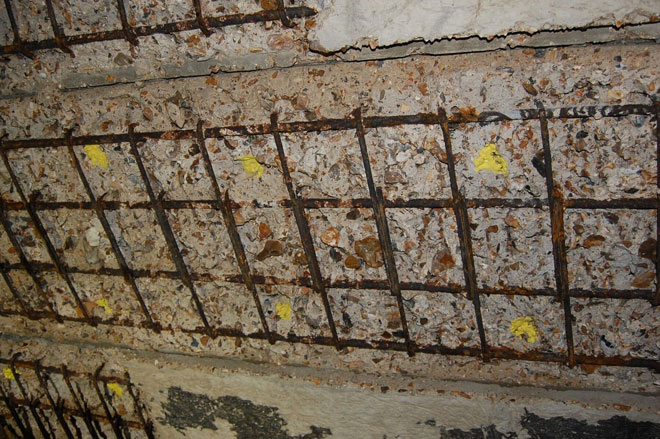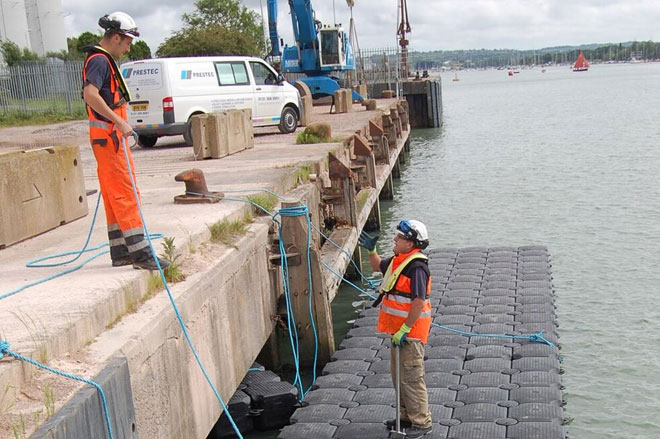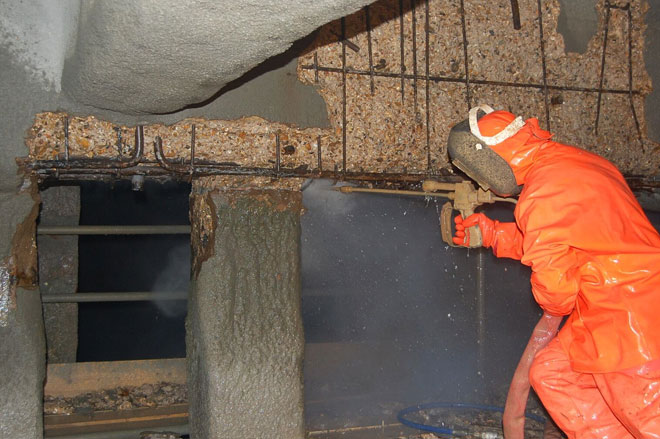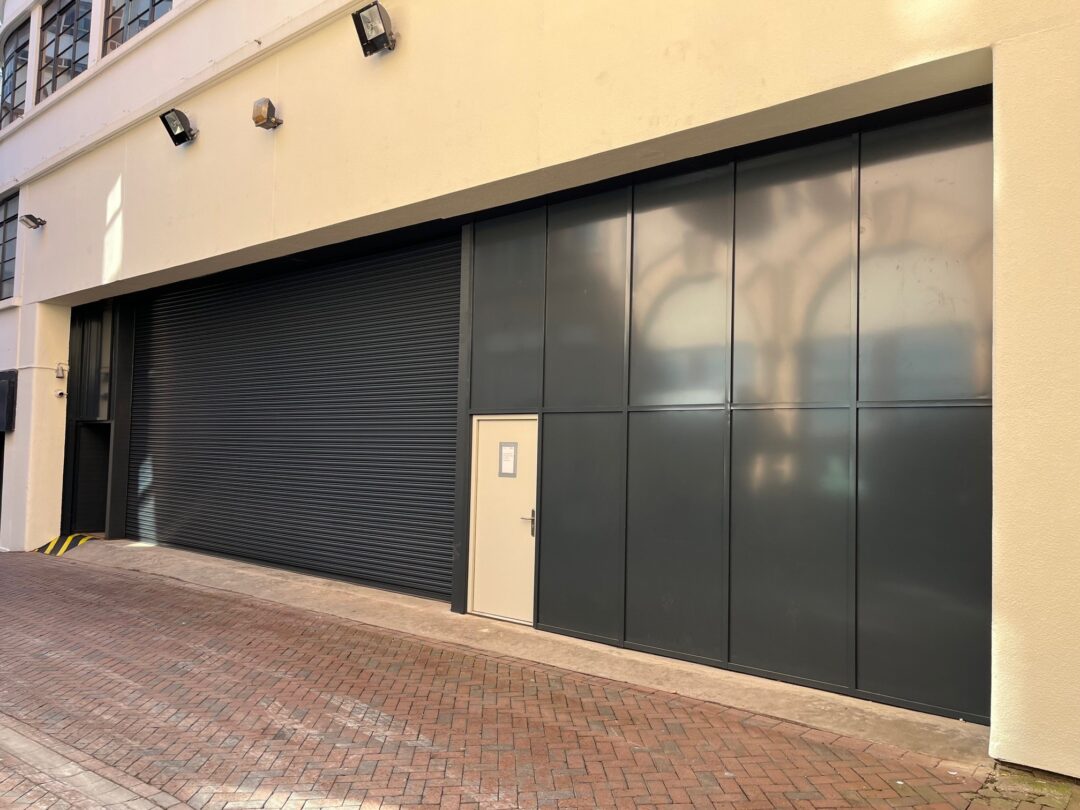Prestec has been instrumental in the remediation and protection of two shipping wharves at Kingston in East Cowes, Isle of Wight.
Built in the 1950s, Kingston Wharf was in a state of disrepair due to severe marine salt corrosion to the steel-reinforced concrete construction. Following a survey by consulting engineer Ramboll, an urgent £600,000 repair project was undertaken by the Cowes Harbour Commission to safeguard the important structure, which represents a lifeline for the island, protecting it for the next 20 years or more.
The poor condition of the structure meant that hydro-demolition was required, using high-pressure water jets to break up defective concrete and clean the remaining substrate and reinforced steel.
A Cathodic Protection (CP) System, using Patchguard anodes from Concrete Preservation Technologies (CPT), were installed to protect the steel reinforcement, with sacrificial anodes placed around the perimeter to counter corrosion in adjacent areas. When connected to the steel reinforcement, the units sacrificially corrode, delivering a protective current to the steel locally. This maintains a passive environment and counters the ingress of chloride salts to the steel surface.
Following fixing of the anodes, the structure was restored using Saint-Gobain Weber’s polymer-modified concrete repair products, specially designed for dry-process spray application to ensure high early strength, reduced rebound and maximum application thickness. With an initial set in two to three hours, this was especially useful given the tidal conditions. Weber.cem pyratop, a rapid-strength repair concrete for large area repairs, was used to resurface concrete roadways and ramps on the wharf.
Throughout the project, the Ramboll site team worked alongside Prestec, who supervised repairs and construction, whilst monitoring performance and quality KPIs (Key Performance Indicators). Site leader, Marcus Gillard, commented: “This proactive and co-operative working process ensured that the project completion delivered the correct result and eliminated subsequent difficult and extremely expensive remedial work.”
This project posed a number of logistical problems. It was decided to install a full hanging scaffold to the Fuel Wharf and sections of the access road. The Aggregate Wharf required a limited number of repairs and it was decided to carry out the repairs using a floating pontoon.
Most of the fuel used on the Isle of Wight was delivered to the Fuel Wharf. Prestec were given details of shipping movements on a Thursday for the following week. During off loading, the Fuel Wharf became an exclusion zone. Together with the tidal conditions this made pre-planning of the work somewhat onerous.
The works required replacement of several steel fender piles and repairs to the steel piled wall on the access section.
David Hewlett, Managing Director said “close liaison with all parties ensured that the project was completed to the satisfaction of all parties.”









